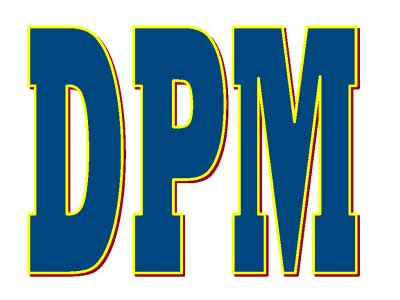 |
Effective Prehospital Patient Handoffs Between Providers |
0.50 |
Effective Prehospital Patient Handoffs Between Providers was designed to provide a common process for reporting patient information during the prehospital care process. Communication of the patient's prehospital care from all level of providers is essential in ensuring the continuation of care in a unified and effective manner and to help provide a seamless transition in their care. This course expands on the idea of effective patient handoffs to the field providers that often transfer patients between various levels of care from first-responder through advanced paramedics. Very often, initial observations of those initial responders are unavailable to subsequent responders - either because the patient has been moved, or the scene itself has been altered. Without an effective process to communicate these details, important information can and will be lost. |
 |
Effective Presentations: Audience Analysis and Supporting Material |
0.50 |
This course will cover how to analyze the audience and identify the benefits of audience analysis. You will also learn how to determine the supporting material and the types of supporting material. |
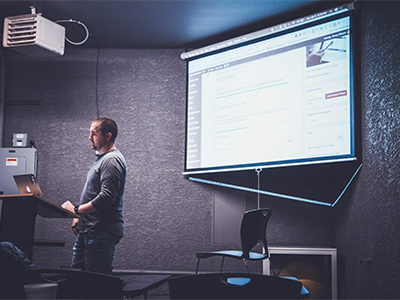 |
Effective Presentations: Audience Analysis and Supporting Material (Instructor Guide) |
0.84 |
Audience analysis is the process of determining the audience’s needs, so you can give an appropriate presentation. You should determine the reason people will attend your presentation; it might be a requirement, or they might be interested in the topic. It is also helpful to determine your audience's attitudes, interests, and level of knowledge.
This Instructor's Edition of this course includes notes and suggestions to assist you in presenting the material, whether in an in-person classroom setting, or as an instructor-led online or distance-learning course. It also provides you with the answers to questions found in mid-lesson activities, as well as in the quiz that concludes the course. |
 |
Effective Presentations: Building Presentations |
0.50 |
This course will cover how to build a presentation, develop an introduction and capture the attention of the audience, and organize the body of the presentation and use transitions. You will also learn how to conclude the presentation. |
 |
Effective Presentations: Building Presentations (Instructor Guide) |
1.17 |
Organization is extremely important in a presentation because the audience cannot follow your work if they become confused. Therefore, it is the responsibility of the presenter to help the audience understand the presentation from beginning to end.
This Instructor's Edition of this course includes notes and suggestions to assist you in presenting the material, whether in an in-person classroom setting, or as an instructor-led online or distance-learning course. It also provides you with the answers to questions found in mid-lesson activities, as well as in the quiz that concludes the course. |
 |
Effective Presentations: Fundamentals of Persuasion |
1.00 |
This course will focus on persuasion and the goals of persuasion. You will also learn how to organize a persuasive presentation and use the methods of persuasion. |
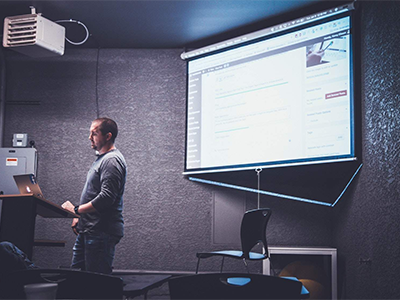 |
Effective Presentations: Fundamentals of Persuasion (Instructor Guide) |
1.17 |
Although all presentations are persuasive to some extent, a true persuasive presentation attempts to influence the way audience members think about something or influence the way they behave.
This Instructor's Edition of this course includes notes and suggestions to assist you in presenting the material, whether in an in-person classroom setting, or as an instructor-led online or distance-learning course. It also provides you with the answers to questions found in mid-lesson activities, as well as in the quiz that concludes the course. |
 |
Effective Presentations: Fundamentals of Presentation |
0.75 |
This course will cover how to identify and use effective presentations. You will also learn how to plan a presentation and determine primary and secondary objectives. |
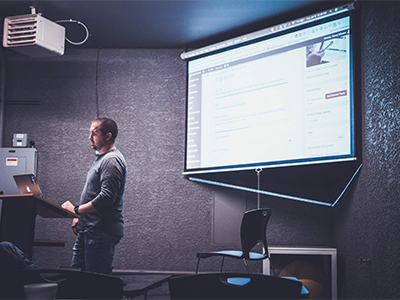 |
Effective Presentations: Fundamentals of Presentation (Instructor Guide) |
0.67 |
Effective presentations provide the opportunity to communicate important, specific information in a succinct manner that is beneficial to the audience members. To create this benefit, the information or processes described in the presentation must be presented in a manner that allows the audience to understand and use them.
Effective presentations are comprised of several elements, including support materials, presentation skills, and relevant content. It is important that all irrelevant content is eliminated from the presentation, so the listener is not overloaded with data.
This Instructor's Edition of this course includes notes and suggestions to assist you in presenting the material, whether in an in-person classroom setting, or as an instructor-led online or distance-learning course. It also provides you with the answers to questions found in mid-lesson activities, as well as in the quiz that concludes the course. |
 |
Effective Presentations: Presentation Mechanics |
0.50 |
This course will cover how to incorporate visual aids and understand the types of visual aids. You will also learn how to display and create visual aids. |
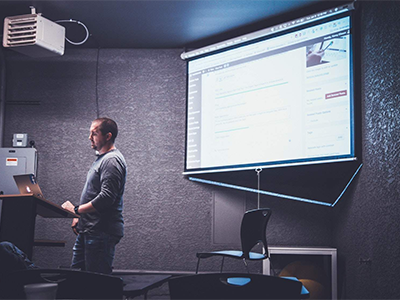 |
Effective Presentations: Presentation Mechanics (Instructor Guide) |
1.00 |
For the success of your presentation, you should consider the environment. Always try to view the facility sometime during the early stages of your preparation process, because the facility itself can affect your preparation, as well as the delivery of it.
This Instructor's Edition of this course includes notes and suggestions to assist you in presenting the material, whether in an in-person classroom setting, or as an instructor-led online or distance-learning course. It also provides you with the answers to questions found in mid-lesson activities, as well as in the quiz that concludes the course. |
 |
Effective Presentations: Presentation Process |
1.00 |
This course will cover how to use a presentation process, prepare before making the presentation and overcome the fear of speaking, and deliver a presentation by using different aspects of voice. You will also learn how to use nonverbal communication aids. |
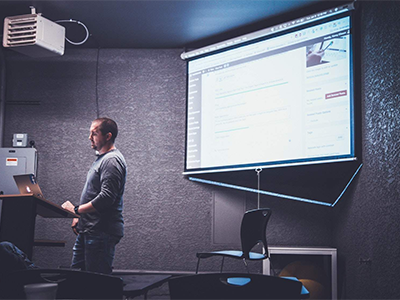 |
Effective Presentations: Presentation Process (Instructor Guide) |
1.34 |
For a presenter to communicate a message to the audience successfully, you have to do more than simply transfer information. Instead, you need to create meaning for the audience, which is done by preparing and delivering your presentation in a manner that focuses on the audience. It is important to remember that the presentation can accomplish your objectives only if it is meaningful to the audience.
This Instructor's Edition of this course includes notes and suggestions to assist you in presenting the material, whether in an in-person classroom setting, or as an instructor-led online or distance-learning course. It also provides you with the answers to questions found in mid-lesson activities, as well as in the quiz that concludes the course. |
 |
Effective Presentations: Question-and-Answer Session |
0.50 |
This course will cover how to prepare to answer questions and conduct a question-and-answer session. You will also learn how to handle challenging questions and audiences. |
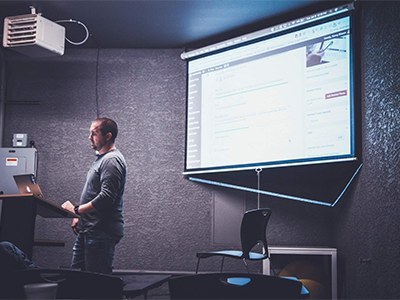 |
Effective Presentations: Question-and-Answer Session (Instructor Guide) |
0.67 |
Because audience members usually ask questions that reflect their own situation and experiences, you’ll have the opportunity to apply your topic directly to their lives, which will improve your audience’s understanding and retention of the information you present.
This Instructor's Edition of this course includes notes and suggestions to assist you in presenting the material, whether in an in-person classroom setting, or as an instructor-led online or distance-learning course. It also provides you with the answers to questions found in mid-lesson activities, as well as in the quiz that concludes the course. |
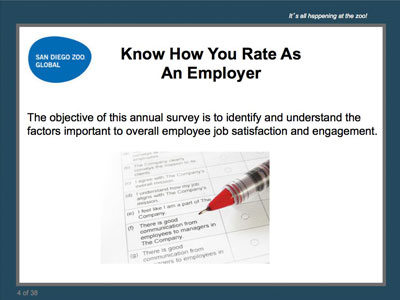 |
Effectively Managing an Employee Engagement and Satisfaction Survey |
1.00 |
There is much scientific evidence that clearly shows a direct correlation between employee engagement/satisfaction and organizational performance. Engaged employees are more productive, profitable and customer service oriented. Engaged employees drive company innovation and have increased tenure. Learn how to conduct a World Famous Employee Satisfaction Survey, and incorporate the right questions to ask to also measure Employee Engagement - which will definitely benefit your organization by showing employees that you have a genuine interest in their feedback. |
 |
Egress, Fire Prevention, & Fire Protection |
0.65 |
In this course, participants will learn about escape routes and exits, emergency action plans, fire prevention plans, fires, fire extinguishers, and workplace fire prevention tips. |
 |
El temperamento de los niños: un enfoque práctico para satisfacer las necesidades individuales (CDA 3) (Spanish) Children's Temperament: A Practical Approach to Meeting Individual Needs (CDA 3) |
2.00 |
Cada niño viene a este mundo como un individuo único con formas únicas de responder al mundo a través de sus emociones y acciones. A esto se le llama temperamento. Reconocer y comprender las diferencias de temperamento es crucial para fomentar la salud socioemocional de un niño.
Every child comes into this world as a unique individual with unique ways of responding to the world through their emotions and actions. This is called temperament. Recognizing and understanding differences in temperament is crucial for nurturing a child's social-emotional health. |
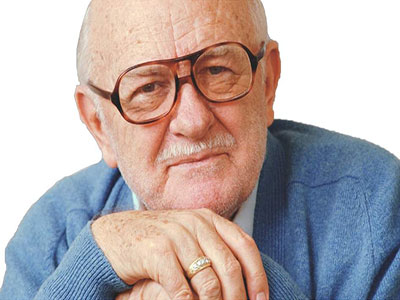 |
Elder Abuse Prevention |
1.25 |
In this course, you will learn about the prevalence of elder abuse and define the scope of this hidden epidemic. You will learn about the different types of abuse, your role in caring for elders, how to recognize signs of abuse, what to do if abuse is suspected, and how to help prevent it.
|
 |
Electrical Safety |
0.75 |
This course covers OSHA’s role and standards regarding electrical safety/hazards, defines the basic fundamentals of electricity, identifies and recognizes safety hazards, and describes protection methods against electrical hazards.
|
 |
Electrical Safety for the Non-Electrical Skilled Worker |
0.25 |
This course covers additional safety training for electrical hazards that non-electrical skilled workers are exposed to in the workplace. |
 |
Electricity |
1.00 |
Working with electricity can be dangerous. This course covers electrical safety while on the job. You will learn about the types of electrical-related injuries that can occur, and how to prevent them. |
 |
Elegir la mejor solución (Spanish) Choosing the Best Solution |
1.50 |
Este curso profundizará en estrategias generales de toma de decisiones que puede aplicar en diversos escenarios. Estas estrategias lo prepararán mejor para tomar decisiones difíciles en su vida diaria.
This course will dive into general decision-making strategies you can apply to various scenarios. These strategies will better prepare you to make difficult decisions in your everyday life. |
 |
Elements of an Effective Safety and Health Program |
1.00 |
This course covers recommended practices for a proactive approach to managing workplace safety and health. Finding and removing hazards before they become problems avoids the direct and indirect costs of worker illnesses and injuries and promotes a positive work environment. |
 |
Elements of the Environment |
2.00 |
A positive environment for out-of-school time programs is as vital to the success of a program. It is important for the staff to understand the powerful effect the environment has in supporting the overall goals of school-age care and afterschool programs. Once staff members understand the role of the environment, they will be able to create an atmosphere in which children's and youth's growth and development are supported by the ways in which the space is arranged and managed, materials are chosen and maintained, and interpersonal relationships are developed. This course will help examine the indoor, outdoor and interpersonal environments of their program, gain knowledge on how to use all environments effectively, and identify a variety of ways to enhance the out-of-school time environment for children and youth. |


























